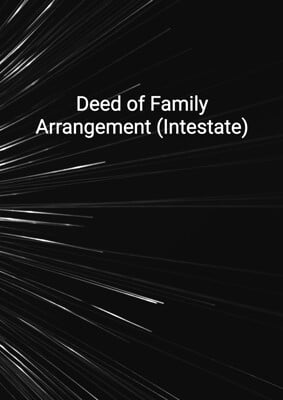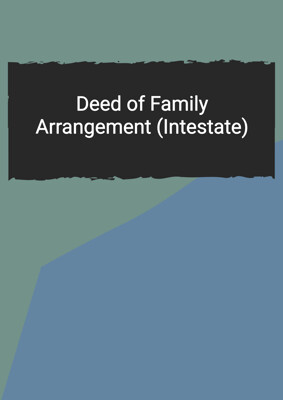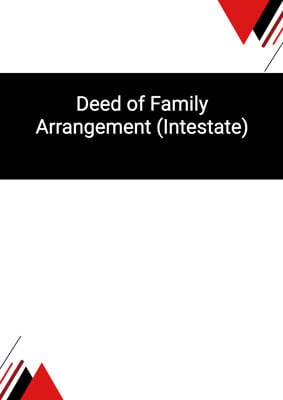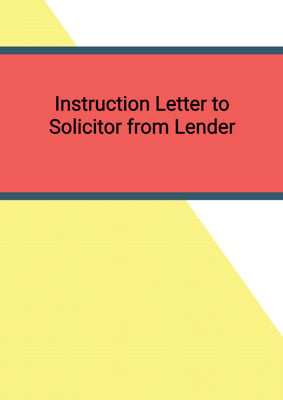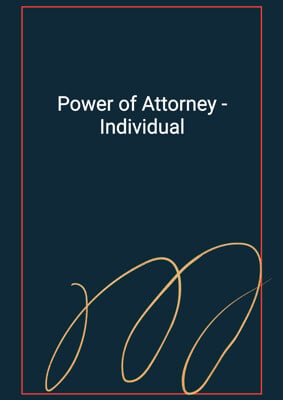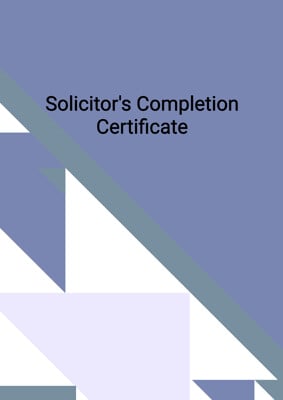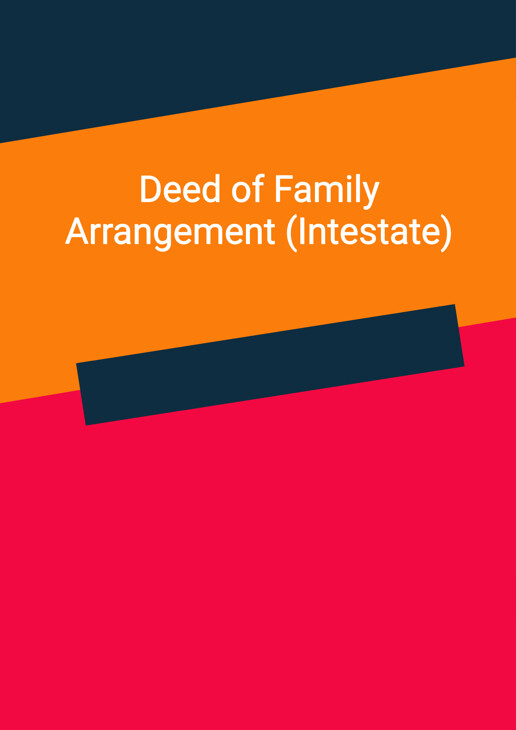
Deed of Family Arrangement (Intestate)
Children and Widow (Wife)
The Deed of Family Arrangement alters the way the deceased person's assets will distributed between the beneficiaries. In this template, the widow waives her right, title and interest in the property and two children get ownership of the properties of the deceased.
How to Tailor the Document for Your Need?
01
Create Document
Fill in the details of the parties. You can click the "Fill with Member’s Information" button to complete it with information saved to your account.
02
Fill Information
Please fill in any additional information by following the step-by-step guide on the left hand side of the preview document and click the "Next" button.
03
Get Document
When you are done, click the "Get Document" button and you can download the document in Word or PDF format.
04
Review Document
The document should be signed by the authorised signatory (or directors of a company) and witnessed to complete the formality.
Document Preview
Document Description
The Deed of Family Arrangement (Intestate) is a legal document that is entered into by the parties involved to distribute the estate of a deceased person who died intestate. The document begins by providing a brief background, stating that the deceased person had lawful and natural children (the first beneficiary and the second beneficiary) and a lawful widow (the third beneficiary) who are entitled to the distribution of the estate. It is mentioned that the deceased person owned certain properties, which are described in the schedules attached to the document.
The document further explains that the estate administration, as the administrator, has already paid the funeral and testamentary expenses of the deceased, as well as all his debts and death duties. The remaining estate consists only of the properties mentioned in the schedules. The third beneficiary has agreed to waive and renounce all rights and interest in the said properties out of natural love and affection for the first and second beneficiaries.
To formalize the family arrangement, the parties agree that the first beneficiary will have absolute enjoyment and ownership of the property described in schedule 1, while the second beneficiary will have absolute enjoyment and ownership of the property described in schedule 2. The third beneficiary irrevocably and absolutely waives and renounces all her rights and interest in the said properties.
The document also states that the estate administration will execute all necessary documents to carry out the arrangement, and each party will release and indemnify the first beneficiary (acting as the administrator) from any actions, claims, or proceedings related to the administration of the estate. The second beneficiary agrees to pay all claims, charges, expenses, and costs related to the property described in schedule 2 and indemnify the administrator and the estate. Similarly, the first beneficiary agrees to do the same for the property described in schedule 1.
In conclusion, this deed of family arrangement serves as a binding agreement between the parties involved, substituting and varying the applicable intestacy law. It ensures a fair distribution of the estate according to the agreed-upon arrangement, providing clarity and legal protection for all parties.
How to use this document?
To use the Deed of Family Arrangement (Intestate) effectively, follow these steps:
1. Understand the background: Familiarize yourself with the circumstances of the deceased person's intestacy, including the lawful and natural children and the lawful widow who are entitled to the estate.
2. Identify the properties: Review the schedules attached to the document to identify the specific properties that are part of the estate.
3. Agree on the family arrangement: Ensure that all parties involved agree to the proposed distribution of the properties, with the first beneficiary having absolute enjoyment and ownership of the property in schedule 1, and the second beneficiary having the same for the property in schedule 2.
4. Waiver and renouncement: Confirm that the third beneficiary willingly waives and renounces all rights and interest in the said properties.
5. Execute necessary documents: The estate administration, as the administrator, should prepare and execute all required documents, such as assents, assignments, conveyances, or deeds, to carry out the family arrangement.
6. Release and indemnify: Each party should release and indemnify the first beneficiary (acting as the administrator) from any actions, claims, or proceedings related to the administration of the estate.
7. Payment and indemnification: The second beneficiary should commit to paying all claims, charges, expenses, and costs related to the property in schedule 2, while the first beneficiary should do the same for the property in schedule 1.
By following these steps, you can ensure a smooth and legally sound distribution of the estate according to the family arrangement agreed upon by all parties involved.
Not the right document?
Don’t worry, we have thousands of documents for you to choose from:



